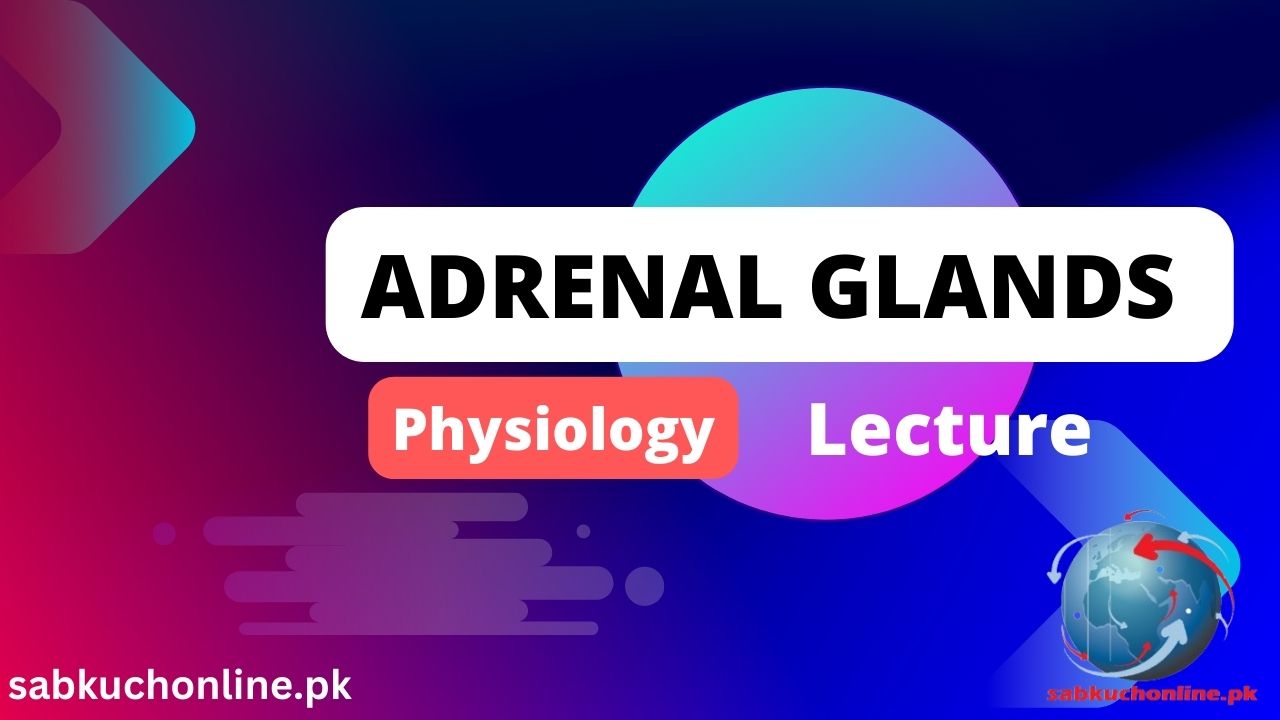Learning Objectives
At the end of the lecture all the students should be able
to:
- Explain the location of adrenal gland, its functional anatomy and importance.
- Elucidate the mechanism of synthesis of the adrenal hormones.
- Know the different hormones secreted from adrenal cortex and medulla.
- Elucidate the general features regarding the ACTH
Adrenal Glands
- Divided into two parts; each with separate functions
- Adrenal Cortex
- Adrenal Medulla




Zona Glomerulosa
- Outermost zone – just below the adrenal capsule
- Secretes mineralocorticoids.
- Mineralocorticoids are termed as they are involved in regulation of electrolytes in ECF.
- The naturally synthesized mineralocorticoid of most importance is aldosterone.
- The other is deoxycorticosterone.
Mineralocorticoids
- Aldosterone
- Deoxycorticosterone
- Corticosterone
- 9α- Fluorocortisol
- Cortisol
- Cortisone
Zona Fasciculata
- Middle zone – between the glomerulosa and reticularis
- Primary secretion is glucocorticoids.
- Glucocorticoids, as the term implies, are involved the increasing of blood glucose levels. However they have additional effects in protein and fat metabolism.
- The naturally synthesized glucocorticoid of most importance is cortisol.
Zona Reticularis
- Innermost zone – between the fasciculata and medulla
- Primary secretion is androgens.
- Androgenic hormones exhibit approximately the same effects as the male sex hormone – testosterone.
Overlap in the secretions of androgens and glucocorticoids exist between the fasciculata and reticularis.
Glucocorticoids
- Cortisol
- Corticosterone
- Cortisone
- Prednisolone
- Methylprednisolone
- Dexamethasone



Synthetic pathway
- LDL
- Via endocytosis
- ACTH
- Cholesterol desmolase as rate limiting enzyme
ACTH: corticotropin
- Cell: Corticotropes
- Type: peptide 39 aa
- Receptor: cell surface
- Mechanism of Action: cAMP
- CRF?
Transport
- Transcortin
- Cortisol binding globulin
- Albumin
- 90-95% cortisol
- 60% aldosterone
Metabolism
- In liver
- Conjugated to glucuronic acid and sulphates
- Excretion via feces and urine
Regulation of glucocorticoids
- Circadian Rhthem
- Highest level at 6 A.M.
- About 75 % of cortisol are produced at 4-10 AM
- These changes are parallel to changes in ACTH and CRH
- Changes in sleep wake cycles as in shift worker results in daily changes in rhythm of cortisol secretion
EPINEPHRINE & NOR-EPINEPHRINE

Catecholamines
- Dopamine
– Biosynthetic precursor of noradrenaline and adrenaline
– Acts as a neurotransmitter in the central nervous system - Noradrenaline (norepinephrine)
– Neurotransmitter of sympathetic nerves (Autonomic
Nervous System) - Adrenaline (epinephrine)
– Produced primarily in the adrenal medulla
– Only catecholamine whose action is strictly hormonal
Regulation of Adrenal Medullary Secretion


Catecholamine receptors




